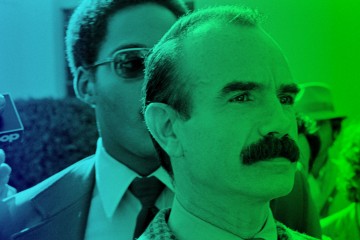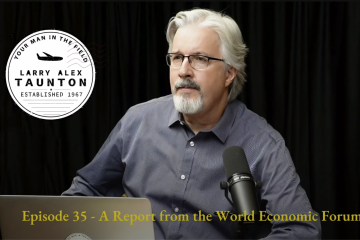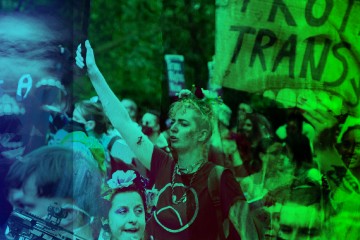India has always fascinated me. Of all the countries that Zachary and I will visit on this expedition, India was the one I was looking forward to most. Perhaps this is, in part, due to early in life exposure to stories of the Indian subcontinent. Like other children of my generation, I saw Disney’s The Jungle Book and eagerly read Kipling’s adventure novel Kim. Rikki-Tikki-Tavi was a late discovery for me, but I liked it, too. And since old movies were cool in my childhood home, George Stevens’s 1939 buddy flick Gunga Din was one of my favorites.
India plays a role in the child’s mind in a way that Scandinavia, say, just doesn’t. India seemed beautiful, vibrant, wild, endlessly diverse, the stuff of adventure, and the land where fortunes were made. Not even Spielberg’s Temple of Doom, a lousy movie that I saw as a teenager, could ruin it for me.
Of course, India is, in a way that only it could be, all of these things. Moreover, India is emerging as an economic powerhouse. Fortunes are indeed being made. (Only America has more billionaires.) In a 2007 visit to Oxford University, I attended a lecture by Michael Wood, the celebrated historian and documentary filmmaker, who was promoting his then new BBC series The Story of India. Speaking of modern India, Wood used phrases like “global power” and “great democracy” and characterized the country’s future in extraordinarily optimistic terms. I left Wood’s presentation wondering if India was, as he seemed to believe, the future source of freedom and civilization.
A decade later and I was landing in Delhi to see for myself. Zachary and I were supposed to go to Mumbai for a few days before coming to the north of the country, but seasonal monsoon flooding necessitated a change in plans. That meant our stay in Delhi would be longer than initially anticipated, and with such a brutal travel schedule—remember, in the last month we have been in the US; New Zealand; Australia; Tokyo and Okinawa, Japan; Singapore; and Hong Kong—the opportunity to stay in one place, in one time zone, was appealing. And this was India, after all, not Syria.
If your Indian point of entry is a major city, your first impressions of the country are strikingly physical in nature: a heat that envelops you, the incessant (and thus pointless) use of car horns, the stench of body odor and old cars coughing-out black fumes and the fragrance of fashionable ladies and spicy food. Not to mention the epic vehicular chaos that is of a sort that I have only witnessed in Africa. Moving amidst all of it are beautiful, exotic people and the grotesquely disfigured who are ignored by all except those of us who aren’t used to seeing them. A man with feet that were swollen to a size I would not have thought possible wheeled himself along on a wooden cart as a boy with only one foot hopped beside me, hand out. A big, shiny Mercedes purred nearby as if to put an exclamation on this picture of life at the economic extremities.
Welcome to India.
Like much of Asia, India is a collision of Eastern and Western styles, customs, and attitudes. Today that influence is largely American, but Western influence began with the British and predates the founding of the United States. Britain officially ruled India for a century, but unofficially dominated the subcontinent for much longer through the East India Company. No corporation has ever wielded such power—not Google, Amazon, or Apple. As a consequence, while British colonial rule ended in 1947, the influence of that once powerful island in the North Atlantic is everywhere. But not everyone wants to acknowledge that fact.
“Did the British contribute anything positive to India?” I asked an Indian historian in Delhi.
“Yes,” he said with a wry smile. “Tea and cricket.”
Of course, as my Indian friend would begrudgingly admit, the British contributed a great deal more to this country and to the creation of its modern manifestation—the English language, not Hindi or Urdu or any of the other 1,000 languages, remains the lingua franca; much of the architecture is from that period or emulates it; social sensibilities among elements of the upper classes mimic that of the British; and the unity and administration of the country. The British brought with them ideas integral to the Judeo-Christian worldview: equality, freedom, human dignity and value. As such, they condemned some traditional Indian (mostly Hindu) customs as immoral while instituting others that were infused with these ideals:
– In 1829, the British outlawed suttee, the Hindu practice whereby a widow is burned on the funeral pyre of her deceased husband.
– In 1856, British law allowed widows to remarry.
– In 1870, the Female Infanticide Act was passed to reduce the prevalence of this all too common Indian practice.
– In 1872, inter-caste marriages were permitted.
– In 1929, child marriages were banned.
These laws were largely the result of pressure from Christian missionaries who, though unsuccessful in converting this country to their faith, were nonetheless successful in converting many of its laws to reflect the core values of that religion. Like Japan after the Second World War, women were the greatest beneficiaries as the above laws would suggest. They were also given greater access to education.
But the passing of laws and enforcing them are two very different things. India regularly ranks as one of the worst countries in the world for females. This ranking is, in part, because the very practices the British were trying to eliminate are still shockingly common, especially in rural India. Add to this the epidemic of rape, a crime that often goes unreported and unprosecuted in India, and you get a picture of a country that, while endlessly interesting, is great only in the sense of substantial, large, or sizable.
And life isn’t much better for males, either. But for a few upscale districts, one finds extraordinary poverty and suffering in both the city and countryside, though it is much worse in the latter. Riding a rickshaw through Old Delhi—I wouldn’t recommend doing it any other way—is an experience not to be forgotten. Guidebooks will speak of this in charming terms, and, if you’re an affluent Westerner, it will seem like the stuff of a Visa commercial. The kaleidoscope of color, the pungent smell of the Khari Baoli Spice Market, and the utter chaos of it all will captivate you.
But you’re looking at it all from a safe distance. In no way does it reflect your life. Look closer. Poke around down the alleyways. Skip the tourist spots where money flows and see what conditions are really like. Rats, mice, open sewage—it’s all there. And the countryside is, as I say, worse. This is poverty to a degree and on a scale that few Americans have ever seen or even think possible. India is a country of haves and have-nots, and the haves have almost everything. It reminded me of the squalor in which we found our daughter, Sasha, before we adopted her from an orphanage in Odessa, Ukraine. Traveling to India? Bring Handi Wipes.
The memory of my daughter’s life in similar conditions was brought powerfully home to me when I was reading on a train. Before we left the station, a metallic rap on my window startled me. I turned to see two Indian boys begging. They gesticulated wildly and, ultimately defeated by the reality that my window did not open, they posed for my camera. With 65 percent of India’s population under the age of 35, India is full of such children. Mothers and fathers exploit them, sending them into the streets to beg while cars pause—or don’t—at traffic lights. India has the highest number of road fatalities in the world. There are many reasons for this—the indifference of Hindus to their own personal safety (they walk casually into oncoming traffic); the fact that lines on the roads mean nothing (cars go five-wide on a three lane as if at Talladega); and the bat-out-of-hell driving (without seatbelts, of course). But it’s not hard to imagine that many of these deaths are the children who dart between the cars, in some cases, unseen because their height does not reach window level.
A central premise to our expedition is the idea that human nature is the same the world over. What changes like time zones are the ideas that form the basic assumptions of a given people or nation. Once an idea is ingested by a society, its effects play out in the life of that culture. Islam, for instance, produces one type of society while socialism produces another. India is a country that has ingested a lot of bad ideas. 80 percent of the country is Hindu, and the beliefs of that religion—a belief in fate most of all—has given rise to a caste system that still exists, has stultified intellectual and economic growth, and continues to weigh-down India’s transition to modernity.
The people? Grand. The history? Fascinating. Should you visit? Absolutely. Even so, in spite of Michael Wood’s rosy forecast—and I should stress that I am a great admirer of Wood’s work—India is unquestionably a generally backward, undeveloped, Third World country. If India is to be the future of freedom and civilization, it must be the far distant future.
India star rating: 3/10


